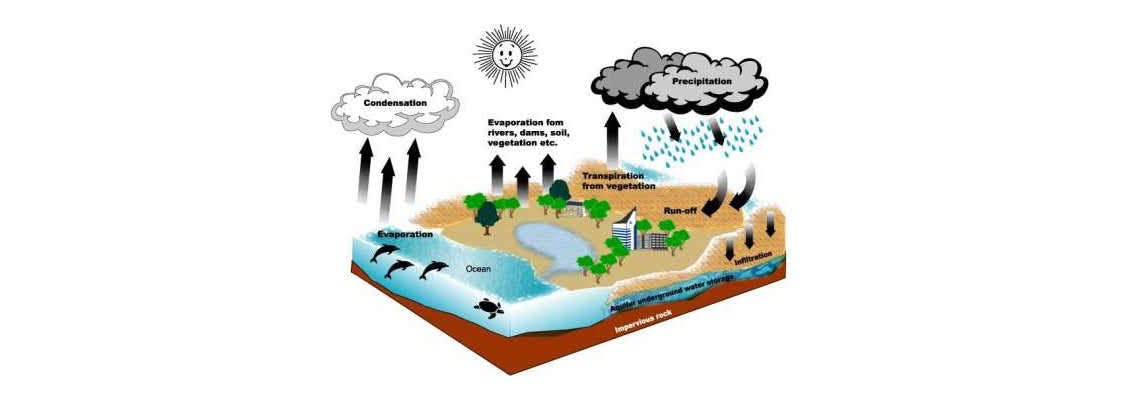
Water never stops moving. Rain falls to the earth from clouds and runs downhill into rivers and lakes. Eventually the water flows into the ocean. During evaporation, the water turns from liquid into gas, and moves from oceans and lakes into the atmosphere where it forms clouds. The cycle starts all over again.
Evaporation
Warmth from the sun causes water from lakes, rivers streams, ice, and soils to turn into water vapour in the air. Almost all of the precipitated water (80 percent) goes right back into the air because of evaporation. The rest runs off the land or soaks into the ground to become ground water.
Transpiration
Transpiration happens when plants give off water vapour through tiny pores in their leaves. This is the plant's way of getting rid of waste, just like people and animals sweat when they're hot! This water vapour evaporates into the air and is stored in the atmosphere until it becomes clouds or precipitation.
Precipitation
Precipitation is made up of any type of water that falls to the earth like snow, hail, mist, or rain. Here in Bunbury we get about 870mm of rain every year. Most of it (80 percent) evaporates or transpires. The rest runs into streams, rivers and dams (surface water) or soaks into the ground (groundwater).
Infiltration
Infiltration happens when water soaks into the soil from the ground level. It moves underground and moves between the soil and rocks. Some of the water will be soaked up by roots to help plants grow. The plant's leaves eventually release the water into the air through the plant's pours as waste. Some of the water keeps moving down into the soil to a level that is filled with water, called ground water.
Groundwater
Ground water is simply water under the ground where the soil is completely filled or saturated. This water is also called an "aquifer." Ground water moves with gravity from high to low areas. Water movement is slow and might move anywhere from less than a millimetre up to a kilometre in a day.
Water table
The Water Table is found underground where the rock and soil begin to be filled or "saturated" with water. It also marks the very top of the ground water layer.
Where the water table meets the land surface, a spring might bubble up or seep from the ground and flow into a lake, stream woodland, or the ocean. When ground water meets the land surface, it flows out and helps keep rivers, lakes and wetlands filled with water.

